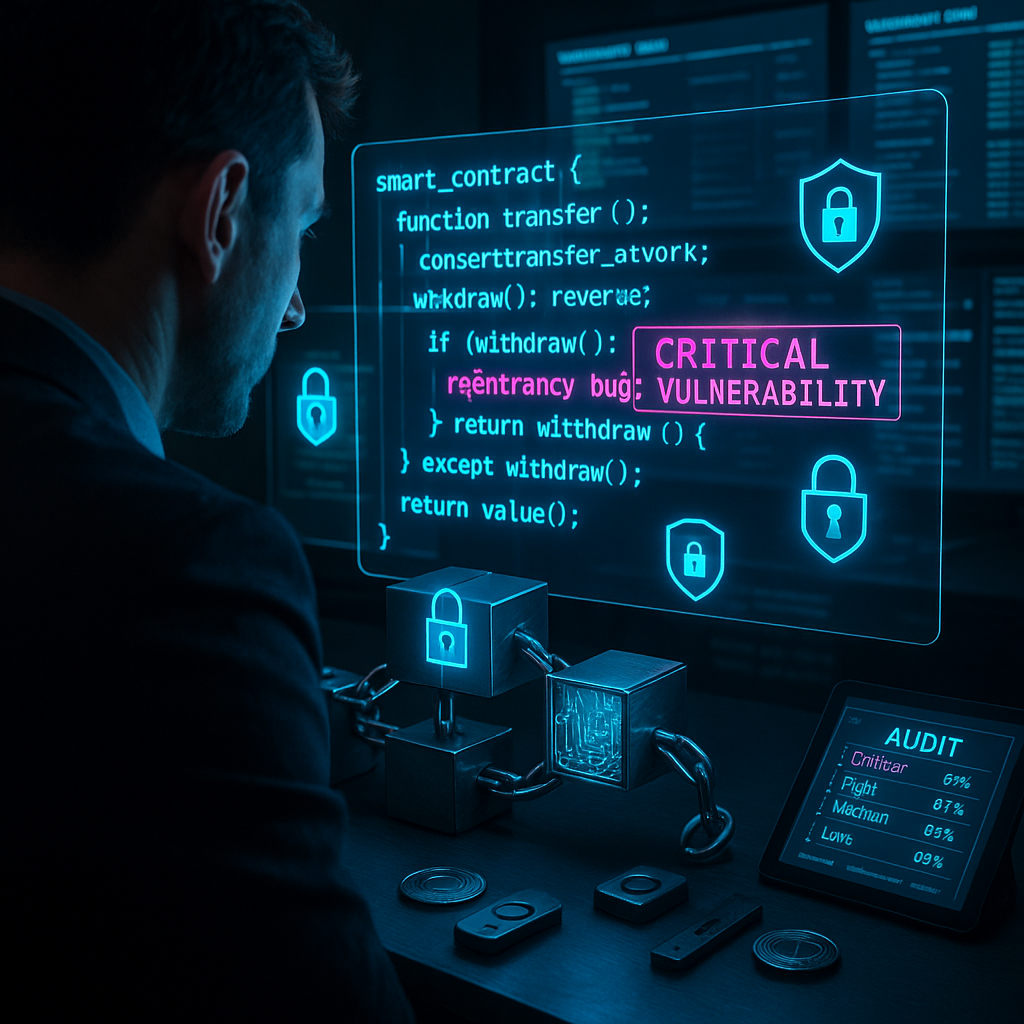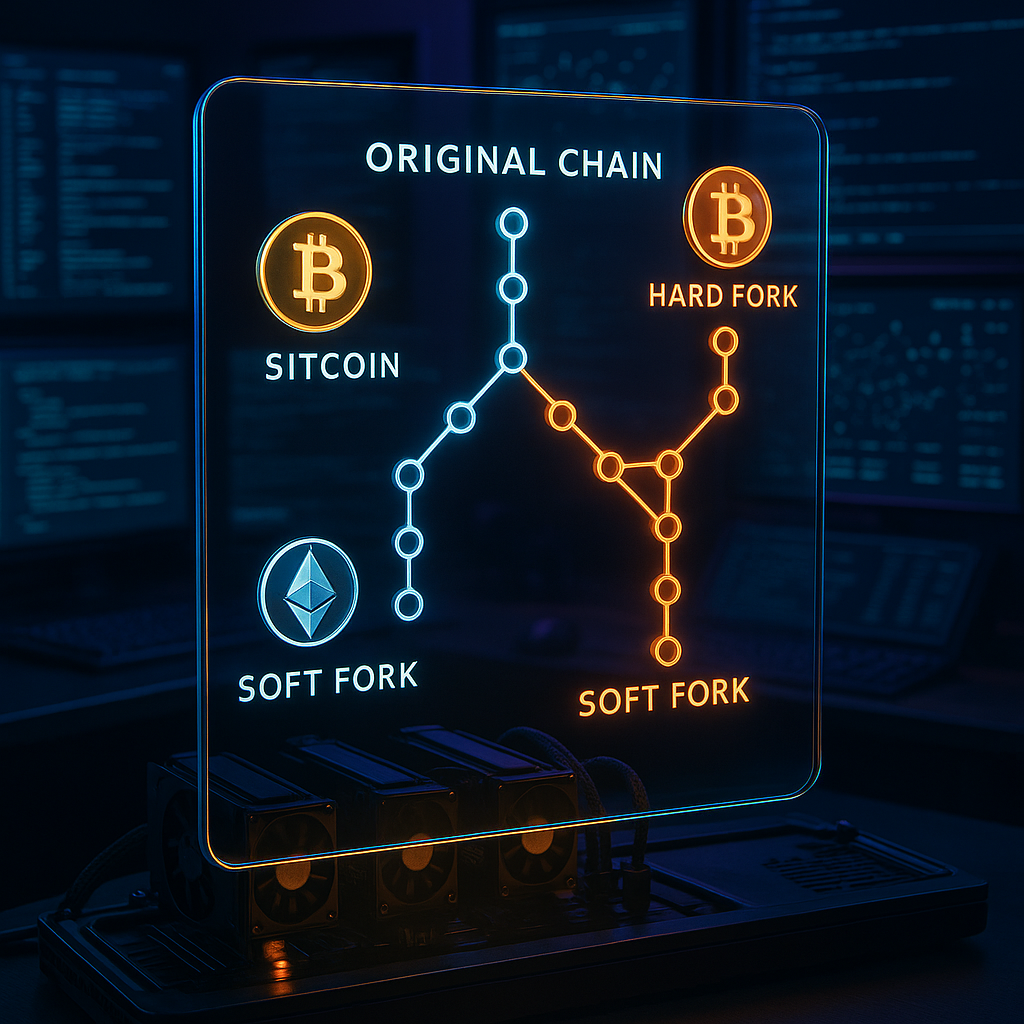Key Takeaways
- Smart contracts are the backbone of DeFi. They enable automated agreements and the movement of digital value without intermediaries. As the amount of value and risk in DeFi grows, understanding smart contract audits becomes fundamental for anyone looking to participate safely. Here are the core principles to know before trusting, engaging with, or building DeFi protocols.
- Understanding smart contract audits is the key to safer DeFi participation. A smart contract audit is a systematic code review designed to identify vulnerabilities or errors before hackers can exploit them, building user and developer confidence in protocol security.
- The audit process demystifies protocol safety by incorporating layers of defense: from code analysis and automated vulnerability scanning to manual review by security professionals and actionable recommendations. Each phase reduces risks for every participant.
- Hidden code risks are common in DeFi. Classic smart contract bugs such as reentrancy, integer overflow, logic errors, or poor access controls have led to significant DeFi breaches. Recognizing these risks helps users make smarter, safer choices.
- Credible audits enhance the reputation of DeFi projects. A transparent, reputable audit report is a positive indicator that a project prioritizes user safety and proactively addresses vulnerabilities.
- Trust should be grounded in transparency. Leading DeFi projects don’t just assert they are secure; they publish audit results, update code to fix any detected issues, and engage trusted third-party auditors for ongoing protection.
- Every user is an essential part of DeFi security. Even non-coders can verify the existence of reputable audit reports, understand their findings, and demand transparency, contributing to higher standards across the entire DeFi ecosystem.
With these principles in mind, you are better prepared to explore the world of smart contract audits. In the following sections, we will guide you through the audit process, showcase real-world cases, and give you tools to identify trustworthy DeFi projects.
Introduction
In decentralized finance, a single line of code can create infinite possibilities (or trigger catastrophic losses). Smart contracts serve as the silent engines behind every DeFi protocol, automating agreements, transferring billions in value, and creating trust between participants who may never meet. Yet, the true strength of these contracts depends entirely on their security measures.
Learning the fundamentals of smart contract audits is far more than a technical exercise. It is your primary shield against vulnerabilities and hidden hazards in code. By understanding the DeFi audit process, you gain the confidence to spot credible projects, interpret audit documentation, and join the decentralized economy as an informed, empowered participant.
Let’s explore the ins and outs of smart contract audits, what security professionals look for, and why a transparent audit trail is essential for establishing trust in DeFi.
Stay Sharp. Stay Ahead.
Join our Telegram Group for exclusive content, real insights,
engage with us and other members and get access to
insider updates, early news and top insights.
 Join the Group
Join the Group
Understanding Smart Contract Audits
Smart contract audits are comprehensive security evaluations of blockchain-based programs that form a crucial layer of protection within decentralized finance. These audits systematically analyze smart contract code to identify vulnerabilities, logic errors, and potential exploits that could put user funds or protocol functionality at risk.
A complete smart contract audit consists of various analytical layers. This includes automated scans for known issues as well as detailed manual reviews conducted by security experts. Think of this as a diligent inspection of a financial institution. Auditors meticulously test every possible transaction route, searching for weak points that attackers might leverage. Through this rigorous process, vulnerabilities ranging from minor inefficiencies to critical flaws are detected and addressed before real-world exploitation can occur.
The Critical Role of Audits in DeFi Security
The rapid evolution of DeFi has sometimes resulted in catastrophic losses, often due to unaudited or poorly audited contracts. A famous example is the Poly Network hack in 2021, where a previously undetected vulnerability led to a $611 million theft. It’s the kind of loss that thorough auditing may have prevented. By contrast, established protocols like Aave and Compound have demonstrated lasting resilience through multiple, rigorous audit cycles and continuous security assessments.
Outside of finance, similar audit processes are deployed in other industries to safeguard critical systems. For example, in healthcare, thorough code audits protect sensitive patient data, while in the energy sector, they ensure systems controlling electrical grids are secure from cyber-attacks.
The DeFi Audit Process Explained
For anyone wanting to understand how a smart contract audit actually works, the process follows systematic steps designed to maximize coverage and reduce risk.
Initial Assessment and Preparation
The journey begins with deep documentation review and clear scope definition. Auditors assess:
- Project architecture and overall technical design
- Previous audit reports and any known vulnerabilities
- Specific security concerns flagged by developers
- Points of integration with other protocols or external services
This foundational step pinpoints high-risk contract components and defines the precise boundaries of the audit, ensuring that no critical area is overlooked.
Technical Analysis and Testing
The core audit is executed in several phases, each targeting different risk areas:
- Automated Analysis
- Static analysis tools examine code for standard vulnerabilities.
- Fuzzing introduces random data inputs to test contract responses.
- Symbolic execution charts all conceivable pathways the contract can traverse.
- Manual Code Review
- Security experts examine the contract line-by-line.
- They verify that business logic is correctly implemented.
- Adherence to security best practices and standards is assessed.
- Dynamic Testing
- Contracts are deployed to test networks for real-world scenario testing.
- Auditors simulate different attack techniques.
- Stress testing evaluates how the contract withstands extreme operating conditions.
Similar audit processes are employed in other sectors for mission-critical software. In the financial industry, algorithmic trading systems undergo comparable reviews to catch exploit risks, while in the automotive world, software for autonomous vehicles is stress-tested to prevent catastrophic failures.
Vulnerability Classification and Reporting
Findings are categorized by risk level to guide prioritization:
- Critical: Immediate, high-impact threats
- High: Severe vulnerabilities that require urgent attention
- Medium: Significant issues with moderate impact
- Low: Minor flaws or efficiency concerns
Every issue is documented in detail:
- Description of the vulnerability and its implications
- Proof-of-concept attacks or exploitation scenarios
- Practical remediation recommendations
- Potential challenges in addressing the vulnerability
The thoroughness of this reporting is central to trust and transparency across the DeFi sector and beyond.
Common Vulnerabilities in Smart Contracts
Identifying and mitigating well-known vulnerability types is essential for robust DeFi protocols.
Security Pitfalls and Attack Vectors
-
Reentrancy Attacks
The infamous DAO hack in 2016 leveraged a reentrancy flaw, draining $60 million in Ether. Modern protocols now implement protections like reentrancy guards and prioritized sequence of actions to block similar threats. -
Access Control Flaws
Weak or absent permission management can allow dangerous unauthorized actions. The 2017 Parity wallet breach, which led to a $280 million loss, was the result of careless access controls. -
Integer Overflow/Underflow
Operations that fail to enforce arithmetic boundaries can open doors to exploits. The Beauty Chain token was compromised by such flaws, letting attackers mint unbounded tokens.
Beyond DeFi, access control flaws can impact sectors like legal tech (e.g., unauthorized manipulation of smart legal contracts) or in healthcare, where data privacy violations can result from poor permissions.
Best Practices for Vulnerability Prevention
Proactive risk management employs best-in-class strategies:
- Rigorous access control systems tailored to contract specifications
- Safe mathematical libraries to prevent calculation errors
- Utilization of well-established design patterns
- Detailed documentation to support maintainability and audits
- Continuous security reviews and up-to-date code patches
Industries such as e-commerce and environmental monitoring similarly benefit from these practices to secure user data, prevent fraud, or ensure the integrity of automated analytical models.
Stay Sharp. Stay Ahead.
Join our Telegram Group for exclusive content, real insights,
engage with us and other members and get access to
insider updates, early news and top insights.
 Join the Group
Join the Group
Evaluating Audit Reports and Findings
Reading and interpreting audit reports is a critical step for both users and prospective contributors to DeFi projects.
Key Elements to Analyze
- Scope and Coverage
- Assess the percentage of code reviewed and the depth of inspection.
- Identify which contract components were audited.
- Understand the tools and methodologies applied during testing.
- Issue Resolution
- Note the number, type, and severity of identified issues.
- Evaluate how developers responded and the mitigation timeline.
- Check for updates confirming vulnerability fixes.
- Auditor Credibility
- Investigate the auditor’s history and professional reputation.
- Look for expertise specific to the relevant blockchain or application domain.
- Review track records that demonstrate successful incident prevention.
In fields like finance, regulator-reviewed security assessments play a similar role. In education technology, transparency in third-party audits supports trust in adaptive learning platforms.
Red Flags and Warning Signs
Be conscious of indicators that suggest insufficient security:
- Compressed audit timeframes (suggesting rushed or incomplete work)
- Audits that only cover select code portions
- Unresolved critical or high-impact findings
- Lack of follow-up verification tests
- Gaps in documentation or missing supporting evidence
- Little or no inclusion of testing with real-world conditions
Users should demand thoroughness, as poor audits invite unnecessary risk.
Selecting an Audit Provider
Choosing a reliable audit service can make the difference between robust security and catastrophic vulnerability.
Qualities of Reputable Auditors
The most respected audit firms consistently demonstrate excellence in the following areas:
- A portfolio showcasing successful audits across diverse protocols and industries
- Advanced technical knowledge tailored to specific blockchain platforms such as Ethereum, Solana, or Binance Smart Chain
- Transparent, well-defined methodologies
- Clear, actionable reporting and documentation
- Ongoing consultation and willingness to support security updates or retesting
Firms like Trail of Bits, CertiK, and ConsenSys Diligence have established themselves by identifying and resolving critical threats before products go mainstream. Similar vetting processes exist in healthcare (for medical device software audits) and finance (for algorithmic trading audits).
Cost Considerations and Timeline Factors
Audit expenses usually fall between $20,000 and $200,000+, reflecting:
- The smart contract’s complexity and number of features
- The desired thoroughness of the auditing process
- Time constraints imposed by deployment schedules or product launches
- Value-added services like ongoing monitoring or emergency testing
Most audits require 2 to 6 weeks to complete. More extensive or innovative projects can take even longer. Beware of rushed audits, as speed often comes at the expense of thoroughness.
Conclusion
Smart contract audits anchor trust, resilience, and credibility across the DeFi landscape. By subjecting blockchain code to rigorous, multi-layered assessments, audits reveal and resolve vulnerabilities before they can inflict real harm, protecting both assets and reputations. Recent incidents have shown that skipping or rushing the audit process exposes projects and users to severe losses. On the other hand, diligence in security has allowed industry leaders to consistently deliver secure, dependable platforms.
For all DeFi participants (developers, investors, or newcomers), understanding and insisting on comprehensive audits is a non-negotiable pillar of responsible involvement. Choosing projects with transparent, reputable audit partners builds a foundation of safety and innovation not just for you, but for the entire Web3 ecosystem.
Looking ahead, as DeFi and blockchain systems expand across industries from finance and supply chain to healthcare and digital identity, the ability to critically evaluate smart contract security will become an essential professional and personal skill. The leaders in this new digital economy will not simply adapt to emerging threats. They will anticipate them, prioritize transparency, and help set higher standards for the next generation.
By empowering yourself with audit knowledge today, you are not only securing your own financial future, you are also shaping a safer, more robust decentralized world. Learn. Earn. Repeat.





Leave a Reply